Görlitz, Sète and Tarragona
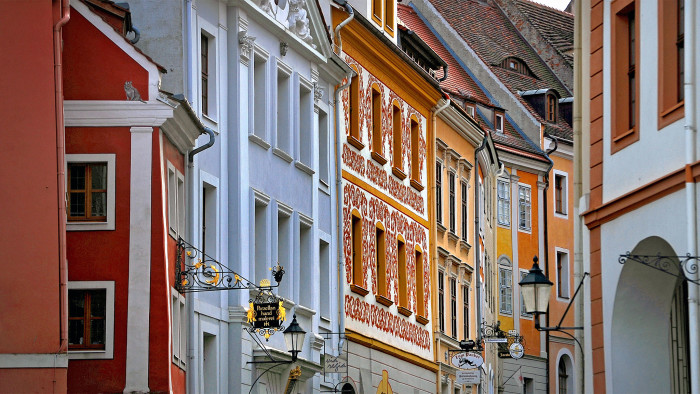
Simply sign up to the Life & Arts myFT Digest -- delivered directly to your inbox.
Görlitz, Germany
By Andrew Eames
It has played the part of wartime Italy in Inglourious Basterds, of 1950s Heidelberg in The Reader and even of 19th-century Paris in Around the World in 80 Days – but this multipurpose film location is not a giant studio. On the contrary, it is a little-known town in central Europe; a sleeping beauty of a place that until recently has had a bit of an identity crisis, finding a niche in pretending to be somewhere else. But now, with two big new movies imminent – The Book Thief and The Grand Budapest Hotel – it is high time that it stepped out of the wings to take the applause in its own right.
The Saxon town of Görlitz sits on the Neisse river in the far east of Germany, close to the borders with both Poland and the Czech Republic. It has always been a pretty place, but for most of the past half-century it has had a fairly grim old time.
My 70-minute train journey cross-country from Dresden (where I have flown in from London) hints at a story of economic decline, with abandoned installations and overgrown freight yards. In Görlitz station, itself echoingly empty, the giant arching twin roofs are almost comically mismatched with the modest little train, which barely occupies a third of platform 11. Outside, judging by the number of people in the main street, it could have been a Sunday morning – except that it was a Wednesday afternoon. A flourishing town of 90,000 has been reduced to around 56,000 since the reunification of Germany. It is half the place it used to be.
But as I penetrate into the old town, the story begins to change. Tarmac turns to cobbles, the roofline is broken by towers and spires, cafés spill out into the street, and people are wandering around, open-mouthed at the array of immaculate Gothic, Renaissance and Baroque architecture. There are 4,000 listed buildings densely packed into the squares and streets of old Görlitz, creating what is almost an integrated work of art, a sort of Prague without the crowds. It comes as little surprise that film directors love it here.
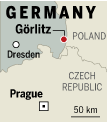
So why here? Why so many? And why so old? It’s all down to the Romans and their trade routes. The Via Regia, a key east-west route, crossed the Neisse at Görlitz, and that trade route intersected with another north-south route from the Baltic sea to Bohemia. So market squares were busy at this crossroads back in the 13th century, peaking in a 16th-century golden age.
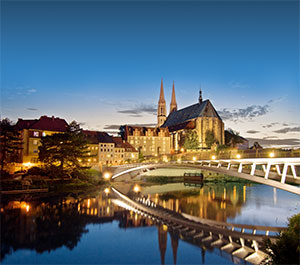
New transport links and changing politics eventually pulled the plug on all that prosperity. The ensuing decline may not have been good for trade but it has certainly been good for tourism because a few centuries of economic standstill have had a fossilising effect, helped by a complete lack of war damage; Görlitz was never on anyone’s front line.
In fact its biggest threat came in the 1980s, says Elke Preis, the guide who shows me round. “The GDR government built a new town of housing blocks, complete with proper bathrooms and central heating, so everyone moved out. The old town became a ghost town – and one that had a huge maintenance bill. The government wanted to pull it down.”
Reunification, as it happens, came just in time. Curious visitors from western Germany realised that Görlitz was something special, and many of them bought up several properties for very little money. The government-run Deutsche Stiftung Denkmalschutz – a foundation for listed buildings – has waded in with €9m, and there’s even a mysterious benefactor, who has donated €500,000, completely anonymously, every year since 1995.
I am staying in the Hotel Börse on the most perfectly preserved of the old town squares, the Untermarkt, about to be a centrepiece in The Book Thief. The hotel exudes discreet good taste, and this is where the majority of the film stars stay.
There are still glimpses of the bad old days in Görlitz, with occasional skeletal buildings standing hollow-eyed and waiting for benefactors. And there’s still the historic frisson of crossing the bridge into Poland on the other side of the river, imagining the border guards who once patrolled (today there are none). Not that Zgorzelec, the Polish town on the far bank, can match the grace of its neighbour. The best thing you can do, having crossed the bridge, is to turn to admire the skyline, and then walk straight back.
Andrew Eames was a guest of Cityjet (cityjet.com) and the Hotel Börse (boerse-goerlitz.de). Cityjet has four flights per week from London City Airport to Dresden, returns from £129.
The 70-minute train journey from Dresden to Görlitz costs €20.40 (see bahn.com). The Börse has rooms from €75 per night
…
Sète, France
By Lucy Wadham
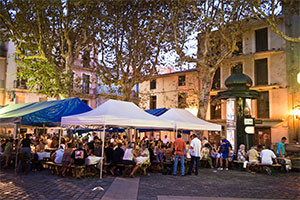
Sète is not a picturesque town, so don’t listen to anyone who tries to tell you that this is the Venice of the Languedoc or a mini Marseille. You won’t find the majesty of Marseille’s Vieux Port in this robust little fishing port, nor the diaphanous splendour of La Serenissima – even though Sète, an island town floating at the apex of the Gulf of Lion, between a lagoon and the open sea, does boast a few canals.
No, this utilitarian little place of 40,000 souls, which catches 20,000 tonnes of fish a year, was built in 1666 for industry, to provide an outlet for the Canal du Midi and it is therefore neither grand nor elegant, but a little shabby and even pockmarked by the odd piece of brutalist architecture commissioned by a succession of communist mayors.
What I love about it, and what makes me want to return, is its strong identity and irresistible self-confidence. Sète doesn’t court outside approval, but when the Sètois think that you “get” their town, they’ll welcome you with open arms.
There’s beauty here, no question, but you have to look for it. It’s in the omnipresence of the sea, the surprising metallic blue of the canals, the views from the volcanic hill of Saint Clair, which flanks the town and looks out over the exquisite curve of its 17-km beach and the Bassin de Thau. Loath as I am to harp on about the light, a transfusion of this miraculous stuff would, believe me, be reason enough to fly here for an autumn weekend break.
Sète’s enigmatic beauty has spawned an improbable number of artists. Peerless balladeer Georges Brassens has his own museum, as does the poet Paul Valéry (offering a small and perfectly formed maritime art collection and a pleasant restaurant). Sètois Pierre Soulages (born 1919), one of the world’s greatest living Abstract Expressionist painters, still retreats from his vertiginous international career to imbibe inspiration from the endlessly shifting tones of Sète’s aquatic landscapes.
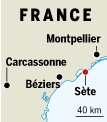
So go to Sète. Get a taste of this jolie laide. Book into the unexpectedly elegant Grand Hotel, making sure you get a room on the canal (no extra charge), and then start, on Friday night, with a walk from here up to the Quartier Haut. The beating heart of this network of narrow streets, once home to Sète’s Neapolitan community and, increasingly, to its growing ranks of boho artists, is the Café Social (35 rue Villaret Joyeuse). Longstanding seat of one of Sète’s nautical jousting clubs, Le Social offers good, unpretentious food and a convivial, often musical atmosphere. Order a plat du jour followed by homemade crème catalane or some quality tapas and have a dance.
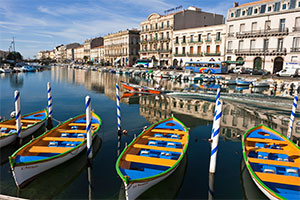
Saturday or Sunday morning (or both), ideally before 11am, head for Les Halles (the covered market) and sit down with the Sètois at any of the cafés (they’re all reliably good) and order a glass of white wine and a platter of oysters, shrimps, sea urchins or clams, all fresh from the lagoon. If you’re not partial to seafood, you can take to your table cheese or charcuterie from any of the excellent Neapolitan or Catalan stalls in the market. There’s also the Bar du Marché outside, run by the wonderful and preposterously bearded Adil, who will, if you let him, tell you everything you ever wanted to know about Sète.
There’s the Mont Saint Clair for the views, the CRAC, (the Centre Régional d’Art Contemporain), a thriving museum on the canal or, for a watery view of Sète, a 45-minute canal tour from the Quai Général Durand. Incidentally, most of the enticing-looking fish restaurants along this stretch of the canal are to be avoided, except, that is, for Chez François (at number 8 Quai Général Durand) and Le Marie Jean (number 26).
Treat yourself to an evening walk on the beach and supper at the restaurant favoured by the cognoscenti, Le Petit Bistro (14 route de la Corniche de Neuburg). Before you leave, buy some lemon, orange flower or aniseed biscuits from Jean Marie and Minouche at the Poujet bakery on Quai de Bosc, then head to Rue Gambetta to pick up some Roquefort from Lou Pastrou and – why not? – some absinthe from L’Epicerie.
Le Grand Hotel (legrandhotelsète.com) has double rooms from €90.
Alternatively La Singulière (no website; tel: +33 06 1550 1167, contact@lasinguliere.com) is an elegant guest house on Mont Saint Clair, with five bedrooms, each with a terrace and sea view, from €150.
Beziers and Montpellier airports are both about 30km away
…
Tarragona, Spain
By Paul Richardson
Tarragona is not what it used to be. In its heyday in the 3rd century AD, this coastal city an hour south of Barcelona was the capital of the Roman province that covered much of what is now northern Spain. Colonia Iulia Urbs Triumphalis Tarraco was a favoured spot for Roman retirees thanks to its famously benign Mediterranean climate (in AD122 Emperor Hadrian described it as “the city of eternal spring”).
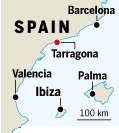
Tarragona is still the capital of its own small province – one of four that make up Catalonia – but its influence has declined to the point that few outside Spain have even heard of it. While Barcelona laps up the glamour and the lion’s share of Catalonia’s regional budget, Tarragona has remained both politically and financially out of the loop.
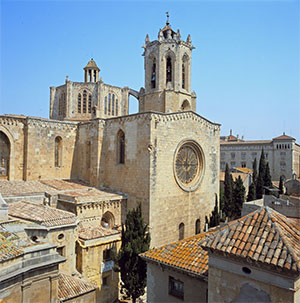
But it is gradually coming out of Barcelona’s shadow. As the seat of the Mediterranean Games in 2017, Tarragona is now the only Spanish city with a major international sporting event in view. Last month Tarragona cathedral was the venue for a mass beatification of Catholic martyrs, bringing the glory of its Catalan Gothic interior to TV screens worldwide.
Meanwhile Tarragona’s central market, a modernist masterpiece dating from 1915, is to be unveiled this winter after a six-year restoration. The latest talking point, however, is the great 3rd-century necropolis where some 2,000 early Christian tombs have been excavated. It reopened in May with a small but instructive new museum.
This is a close-knit city of 135,000 inhabitants where the quality of life is as high as the prices are low. Culturally Tarragona punches above its weight. Gaudí and Miró were both born in the province and its capital has modernist creations by such Catalan luminaries as Domènech i Montaner and Jujol, a Gaudí disciple who worked on Barcelona’s Parc Güell.
Gastronomically too, Tarragona scores highly. The famous dish of the city and province is romesco, a sauce made of ground almonds and hazelnuts with tomato and garlic. (When served with calçots, a kind of spring onion grilled over vine prunings, romesco is one of most delicious things imaginable.) AQ (Carrer de les Coques, 7) is one of a number of small chef-driven restaurants making the most of local rice, fish, fruit and vegetables. For wines Tarragona is also well served thanks its proximity to famous denominaciones such as Priorat, Montsant, Terra Alta and Penedès.
Tarragona is a palimpsest: Roman stelae, pillars and inscriptions can be seen encrusted in shopfronts and dining room walls. Monuments ripe for exploration include the aqueduct, circus maximus, 5km of city wall and the amphitheatre in its splendid setting above the beach with the Mediterranean glistening beyond. The National Museum of Archaeology is one of Spain’s most important.
The Part Alta (upper town) is a warren of medieval streets punctuated by delightful squares such as the Plaça del Rei, the Plaça del Pallol and the Plaça de la Font, where locals gather to sip vermouth (an important element of tarraconense life) and nibble the local almonds. The fishing quarter of El Serrallo is like a mini version of Barcelona’s Barceloneta, the difference being that the Serrallo abuts a hardworking harbour where you can still watch the fishing boats unload.
All the things we love about Mediterranean life are here in generous supply: near-perfect climate, great food and drink, real local culture. And when the trippers from Barcelona are back on the bus, there’s barely a non-local in sight.
The modern AC Hotel (marriott.com) has doubles from €64, or the basic but endearing Hotel Plaça de la Font (hotelpdelafont.com) has double rooms from €55. Paul Richardson was a guest of Le Méridien Ra Hotel (lemeridienra.es, doubles from €165), but it is closed, except for groups, until April 10. Reus airport (served by Ryanair, among others) is 8km away
Comments